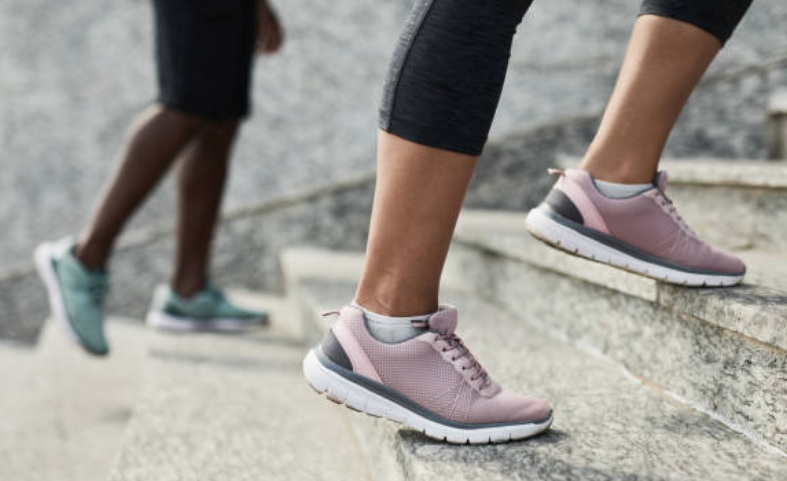Content Menu
● Understanding the Basics
● Identifying Men's vs. Women's Shoes
● Practical Tips for Buying Shoes
● The Importance of Fit
● Trends in Footwear
● Conclusion
● FAQ
>> 1. What is the main difference between men's and women's shoe sizes?
>> 2. How can I tell if a shoe is unisex?
>> 3. Are there performance differences between men's and women's athletic shoes?
>> 4. Can I wear men's shoes if I typically wear women's sizes?
>> 5. Where can I find accurate shoe size conversion charts?
● Citations:
When it comes to footwear, one of the most common dilemmas shoppers face is determining whether a particular pair of shoes is designed for men or women. This distinction is crucial not only for aesthetic preferences but also for comfort, fit, and performance. In this comprehensive guide, we will explore the key differences between men's and women's shoes, how to identify them, and what factors to consider when making a purchase.

Understanding the Basics
The primary difference between men's and women's shoes lies in sizing. Generally, men's shoes are about 1.5 sizes larger than women's shoes. For instance, a men's size 8 corresponds to a women's size 9.5. This size difference is not just a matter of length; it also encompasses width and overall fit.
- Men's Shoes: Typically have a standard width of "D" (medium) and "EE" (wide).
- Women's Shoes: Usually have a standard width of "B" (narrow) and "D" (wide).
This means that if you wear a size 8 in men's shoes, you would likely wear a size 9.5 in women's shoes, but the width would also be narrower in women's styles.
Men's and women's feet differ not only in size but also in shape:
- Men's Feet: Typically wider at the forefoot and have a more uniform width from heel to toe.
- Women's Feet: Generally narrower at the heel and wider at the forefoot, accommodating differences in foot anatomy.
These anatomical differences necessitate distinct designs in shoe construction, ensuring comfort and support tailored to each gender's needs.
Identifying Men's vs. Women's Shoes
When shopping for shoes, there are several visual cues that can help you identify whether they are intended for men or women:
- Labels: Look for tags on the shoe box or inside the shoe itself. Men's shoes may be labeled simply as "Men" or "M," while women's shoes often have "W," "WMNS," or symbols indicating femininity.
- Design Elements: Women's shoes tend to feature softer colors and more decorative designs, whereas men's styles often incorporate darker colors and more robust designs.
- Width Markings: As mentioned earlier, women's standard widths are typically marked as "B," while men's are marked as "D."
In addition to color and labeling, certain design features can indicate whether a shoe is meant for men or women:
- Heel Height: Women's dress shoes often have higher heels compared to men's shoes which usually feature lower profiles.
- Toe Shape: Women's shoes may have more pointed or rounded toes, while men's styles tend to have broader toe boxes.
- Materials Used: Women's shoes might use lighter materials with more embellishments like sequins or floral patterns, while men's shoes often use sturdier materials like leather with minimal decoration.
The construction of men's and women's shoes varies significantly:
- Midsole Cushioning: Women's shoes usually have softer midsoles designed to absorb less impact due to generally lower body weight compared to men. Men's shoes are constructed with denser materials to support greater weight.
- Heel Design: The angle of the heel counter differs; women's shoes often have a flatter heel design to accommodate their unique foot strikes compared to men's shoes.
- Arch Support: Women's footwear often has arch support designed specifically for their foot structure, which tends to have a higher arch compared to men's feet.
Practical Tips for Buying Shoes
When purchasing shoes, especially if you're considering buying a pair that may not be clearly labeled as either men's or women's, keep these tips in mind:
- Try Before You Buy: If possible, try on the shoes to assess comfort and fit. Walk around in them to see how they feel.
- Look for Unisex Options: Some brands offer unisex styles that cater to both genders without compromising on fit or style.
- Consult Size Charts: Many brands provide detailed size charts that can help you convert sizes between men's and women's footwear accurately.
- Check Return Policies: When shopping online, ensure that the retailer has a good return policy so you can exchange or return the shoes if they don't fit properly.

The Importance of Fit
Finding the right fit is essential not only for comfort but also for foot health. Wearing improperly fitting shoes can lead to various foot problems such as blisters, bunions, and plantar fasciitis. Here are some tips for ensuring you choose the right fit:
- Measure Your Feet Regularly: Foot size can change over time due to factors like age and weight gain/loss. Measure your feet at least once a year.
- Consider Socks Thickness: If you plan on wearing thicker socks with your new shoes (like hiking boots), make sure to try them on with those socks for an accurate fit.
- Pay Attention to Width: If you have wide feet, look for brands that offer wide options or specific styles designed for broader feet.
Trends in Footwear
Footwear trends can also influence how we perceive men's and women's shoes. In recent years, there has been a surge in gender-neutral designs that appeal to both men and women:
- Sneakers: Many sneaker brands now offer unisex designs that feature neutral colors and styles appealing to all genders.
- Sandals and Casual Shoes: Brands are increasingly creating sandals and casual footwear that do not conform strictly to traditional gender norms.
This shift reflects broader societal changes towards inclusivity and personal expression in fashion choices.
Conclusion
Understanding the differences between men's and women's shoes is essential for making informed purchasing decisions. By paying attention to sizing, design elements, construction differences, and trying on various options, you can ensure that your footwear choice is both comfortable and suitable for your needs.
Choosing the right pair of shoes goes beyond aesthetics; it involves understanding your foot's unique requirements based on gender-specific designs. Whether you're shopping for athletic footwear or everyday casuals, knowing how to identify whether they are made for men or women will help you make better choices that enhance your comfort and style.

FAQ
1. What is the main difference between men's and women's shoe sizes?
The main difference lies in length and width; men's sizes are generally 1.5 sizes larger than women's sizes with wider widths.
2. How can I tell if a shoe is unisex?
Unisex shoes typically do not have gender-specific labels and may feature sizing options that accommodate both men's and women's feet.
3. Are there performance differences between men's and women's athletic shoes?
Yes, men's athletic shoes often have denser cushioning designed for higher impact forces due to greater average body weight compared to women's athletic footwear.
4. Can I wear men's shoes if I typically wear women's sizes?
Yes, but be mindful of the width difference; men's shoes are generally wider than women's styles.
5. Where can I find accurate shoe size conversion charts?
Most reputable shoe brands provide size conversion charts on their websites or product packaging.
Citations:
[1] https://runrepeat.com/guides/differences-mens-womens-running-shoes
[2] https://www.athleticshoereview.com/differences-between-mens-and-womens-shoes.html
[3] https://newcop.com/en/blogs/newcop-blog/difference-between-men-and-women-adidas-shoes
[4] https://www.freepik.com/free-photos-vectors/men-women-shoes
[5] https://www.freepik.com/photos/men-women-shoes
[6] https://www.youtube.com/watch?v=G5Y93CvExOU
[7] https://shopqbyqs.com/blogs/news/do-men-s-shoes-fit-the-same-as-women-s-a-comprehensive-guide
[8] https://www.reddit.com/r/RunningShoeGeeks/comments/y6m2w0/experiences_buying_womens_shoes_as_a_man/
[9] https://www.reddit.com/r/femalefashionadvice/comments/7uxfy6/discussion_about_mens_shoes_vs_womens/
[10] https://marathonhandbook.com/difference-between-mens-and-womens-shoes/

















